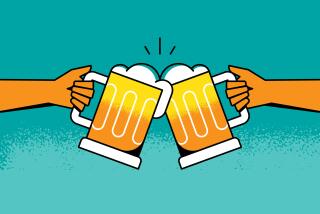Just a Meeting, but Perhaps a Meeting of Minds, Cultures
- Share via
As often happens with great social movements, you never really know you were in on the ground floor of something important until much later.
But just to cover your bets, jot down Thursday, April 23, 1992, at the YWCA on North Broadway as a possible milestone in Santa Ana history.
It’s too early to tell with any certainty whether the meeting Thursday night will be worthy of future celebration or just another forgotten night when citizens’ hopes and fears and frustrations all bubbled up at once into a call for action against the city’s gang violence.
The meeting, which drew about 100 people from across the city, wasn’t meant to solve anything; everyone knew the gang violence problem is too complicated for that. But the raw emotion and pleas for unity that filled the small gymnasium may have the power of reverberation.
“It’s not a political thing. It’s not a racial thing. It’s a personal thing,” said moderator Jim Walker of the Sandpointe neighborhood group. He and other speakers sounded a similar theme--that whoever or whatever constitutes the core of Santa Ana must rise up and take a stand against the violence.
City Councilman Robert L. Richardson made an impassioned pitch for self-involvement. “If you want to start pointing fingers, start with yourself,” he said to the audience. “I’ll start with me.”
Michele Morrisey, an Anglo who’s lived in Santa Ana for 12 years, said she was frustrated because the gang violence culture is so foreign to her upbringing. How can anyone not familiar with it get a grip on understanding the level of violence, she wanted to know.
Kathy Jurado, a Latina who has counseled gang members through school and family contacts, applauded Morrisey for her entreaty. “It’s time for us to sit down and talk to each other,” she said, referring to people from different neighborhoods.
On Friday, I asked Morrisey and Jurado what they’d taken out of the meeting the night before--whether the night had some staying power that might translate into progress against the complex, multilayered problem of gang violence.
“I know there are people who say it’s past the brink, past the turning point,” Morrisey said. “Then there are those of us who have recently invested in the city--emotionally, financially, intellectually--who are saying, ‘I don’t think so.’ We’re at the turning point and it’s time for those who care to come forward and effect change in the city.”
Morrisey’s Floral Park neighborhood isn’t a so-called “gang neighborhood,” but it is proximate to the Willard neighborhood, the scene of a spirited neighbors’ struggle to keep the streets safe. “The fact that it (gang violence) exists in Santa Ana means it affects me,” Morrisey said. “The fact that it isn’t on my doorstep doesn’t mean I can choose not to do anything about it. The fact that it affects someone else, means it affects me as well.”
Morrisey said she likens Santa Ana’s gang problem to that of a family with a serious drinker who makes the whole family dysfunctional. “We’ve identified the drinker--we’ve identified the gangs--but it affects all of us that live within the city. It affects our ability to feel comfortable in our homes and walk the streets at night and bring businesses into Santa Ana.”
Jurado could tell Morrisey a thing or two about the gang culture, some of which would give her hope and some of which might well terrify her. The hopeful part would be about the kids she thinks are gang members in name only and, therefore, reachable by the rest of society.
The frightening part would be the numerous systemic and cultural forces at work against them, Jurado said.
I asked her about Morrisey’s appeal to learn where the violence comes from. “We were Aztecs when we came, we will always be warriors,” Jurado said. “We always will. In those days, they didn’t fight for turf. Now they will. Now they will fight for their piece of the block, because they think that’s all they’re entitled to.”
Despite that, she said it would be a mistake for Anglos to see the violence as a solely Latino or ethnic group problem. She said she’s seen the same symptoms in troubled white youngsters she’s counseled.
“All of them are violent. They don’t have respect for life. They don’t have respect for the fact they put a hole in someone and he’s bleeding to death. To them, this is a game. They think, ‘This is the way it is, and this is the way I have to live.’ ”
Although she says she always worries that efforts like the one started Thursday will “get political,” Jurado said she saw rays of hope. She liked Morrisey’s question and also the one from another Anglo man asking how to get Latino families involved in neighborhood groups.
“I don’t even know where to start, but we’re hearing and we’re listening,” Jurado said. “In my heart, I think something’s going to happen out there. In my heart, I think something will come out of it.”
More to Read
Sign up for Essential California
The most important California stories and recommendations in your inbox every morning.
You may occasionally receive promotional content from the Los Angeles Times.










